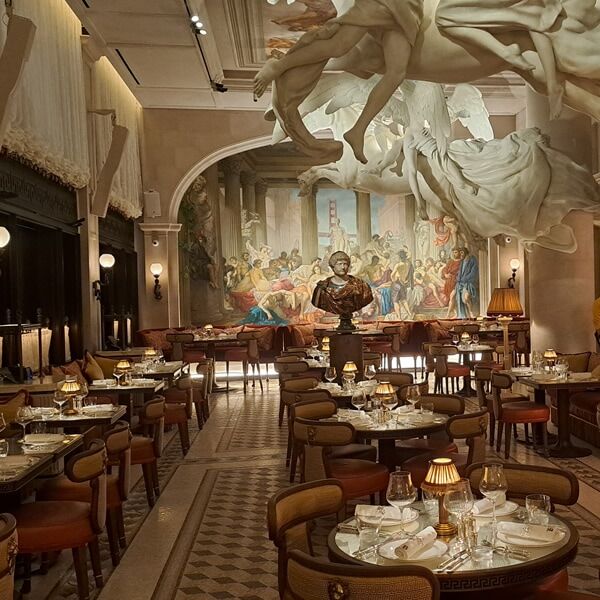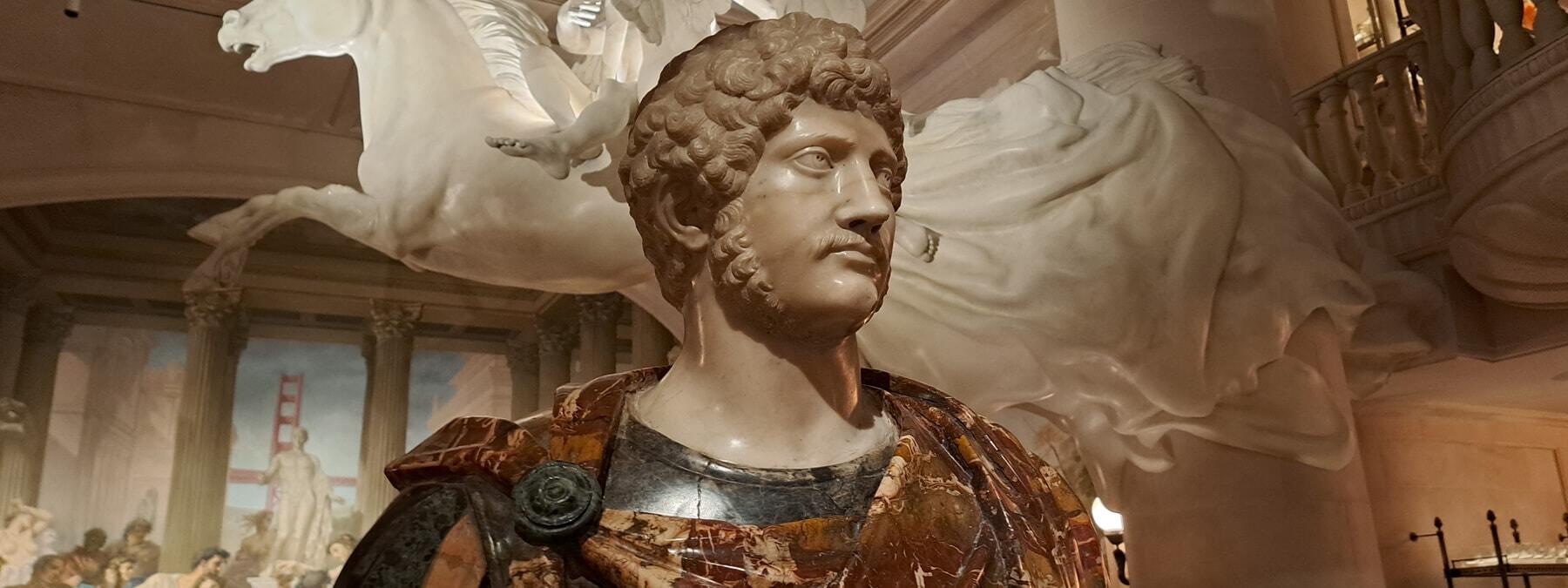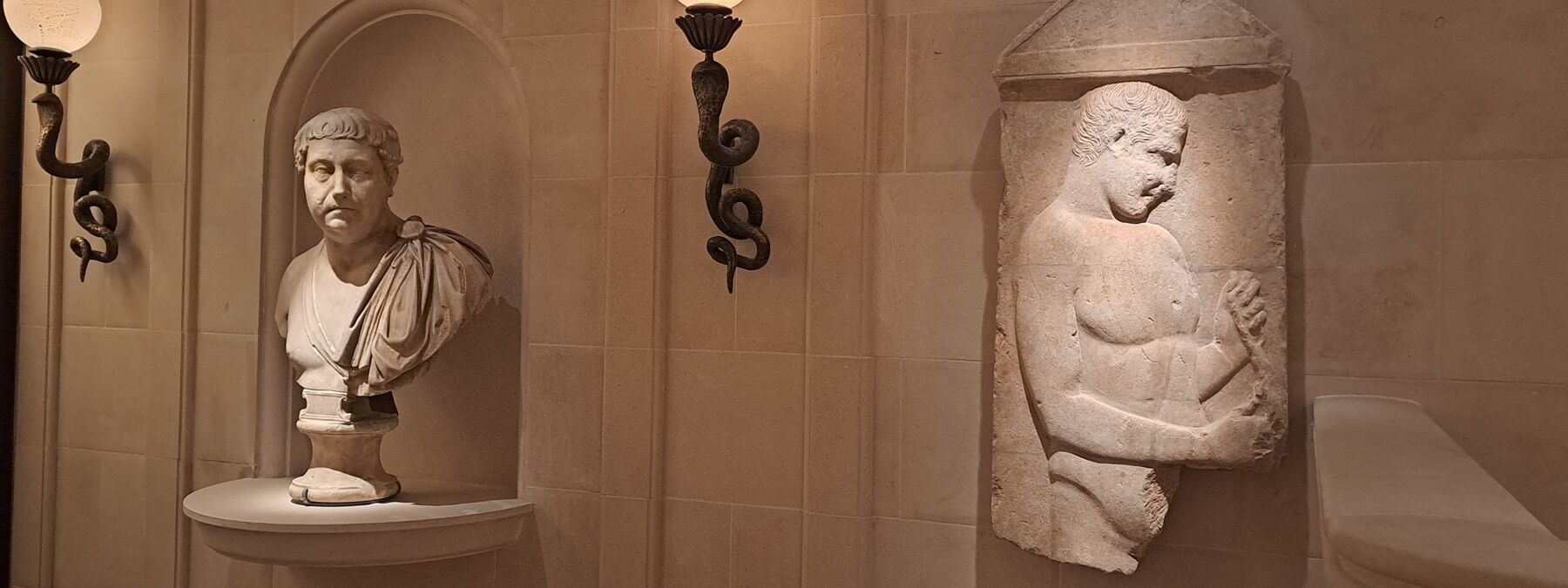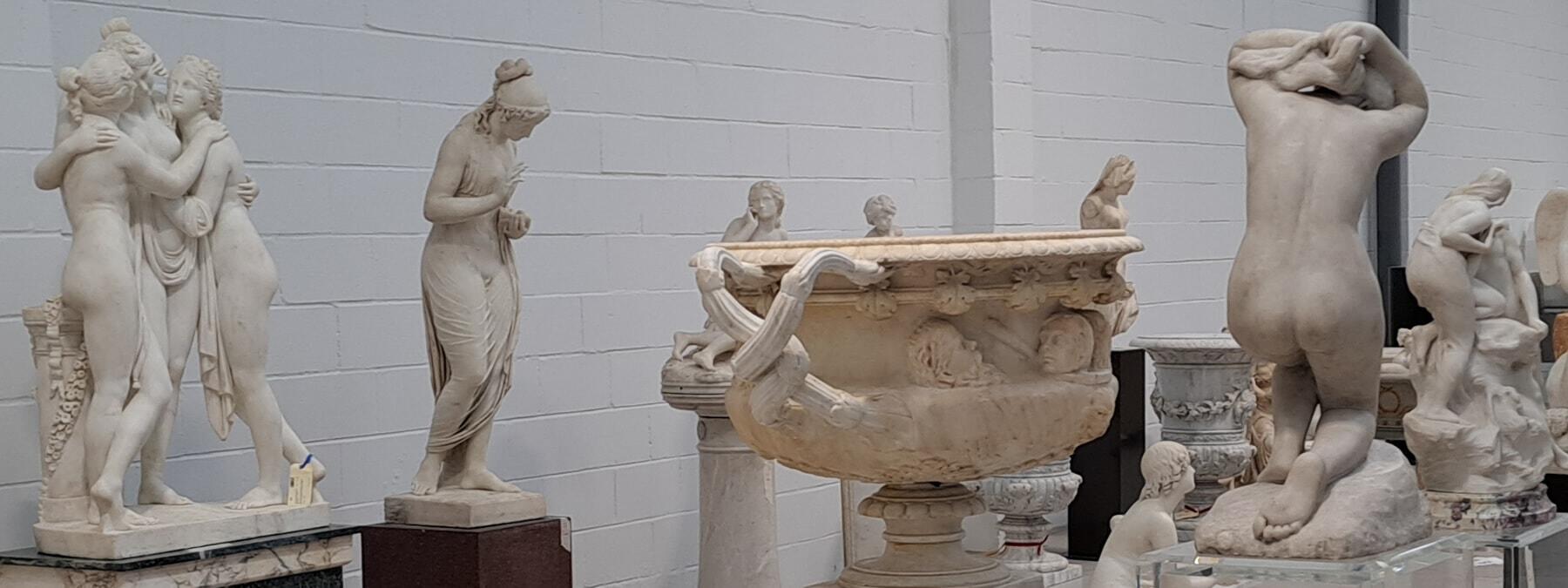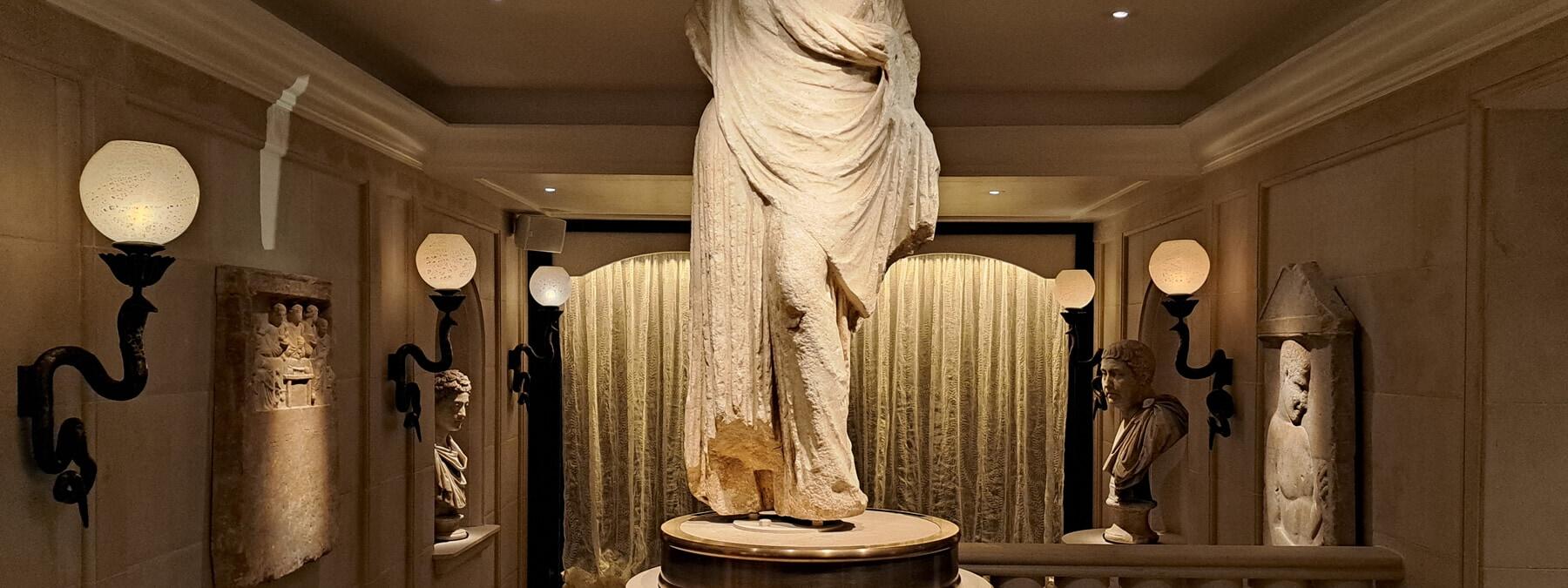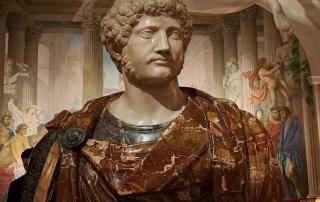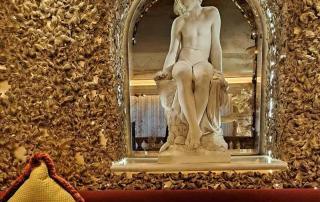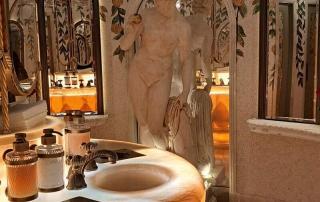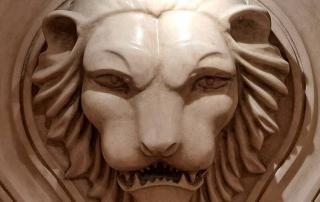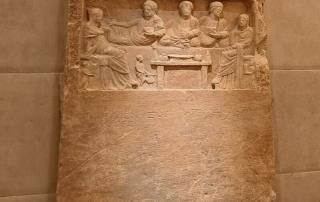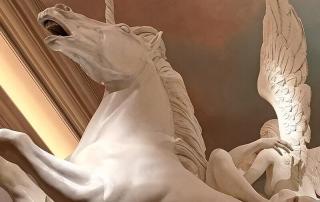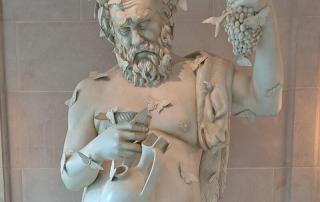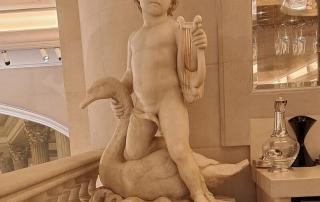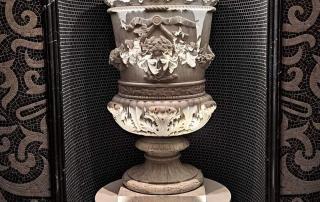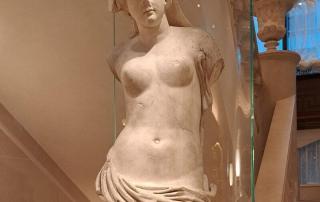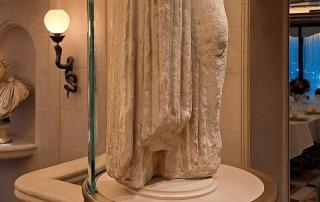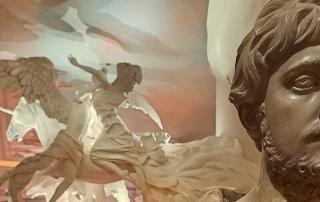A Mythological World of Abundance
Bacchanalia
We were appointed by Caprice Holdings, owners of a collection of London’s favourite restaurants, including The Ivy, Scott’s and Sexy Fish. They wanted our knowledge and experience to display over sixty ancient Roman and Greek sculptures in this truly unique themed restaurant. Bacchanalia is an immersive restaurant on the corner site of 1 Mount Street in Mayfair, London. This current hot-spot location was formerly a Porsche showroom.
Some ancient artefacts date back almost 2400 years and vary considerably in size, weight and condition. The various objects would be chosen from a collection of over 100 artefacts from the chairman’s collection. The artefacts were to be displayed at different locations around the restaurant. Some of these breathtaking sculptures sit under five dramatic Damien Hirst figures. These include winged lions, unicorns, angels, snake-haired Medusa, and the figure of Bacchus, the Roman god of harvest and festivities.
However, unlike a museum or exhibition environment, most of these objects would not be protected behind glass showcases. The muse sculptures would be displayed where diners could interact with the objects, consequently feeling immersed in a mythological world of abundance.
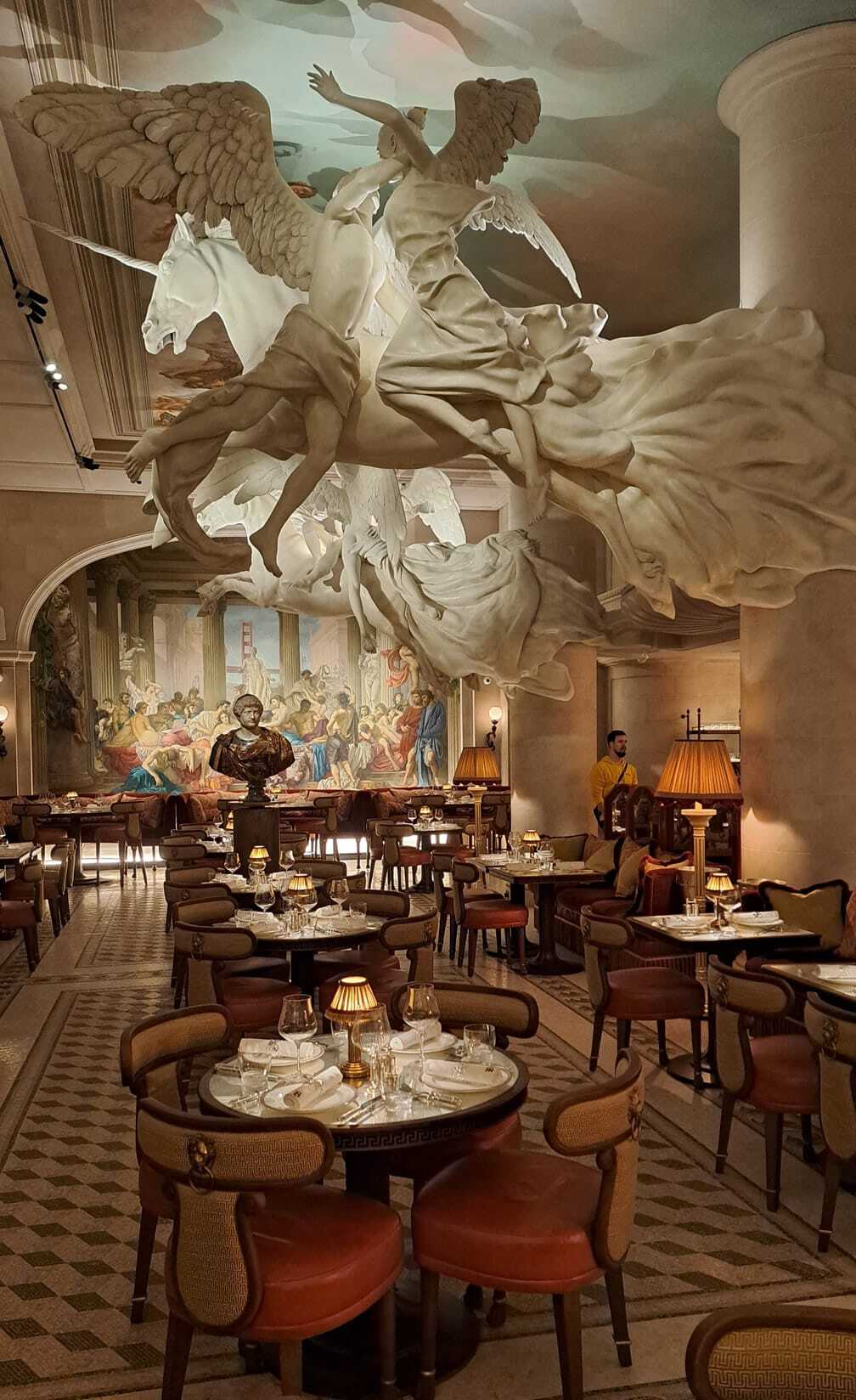
With this in mind, it was paramount to establish which of these objects were in stable enough condition for display purposes, in need of conservation treatment or needed additional physical mounts to make them secure and safe.
Showcasing artworks more than 2400 years old
Immersive stories of splendour & imagination
Object Display Expertise
The restaurant designer, MBDS, had generated a basic object database. Their database was then added to reflect necessary information and revised numerous times throughout the project. Due to the weight and size of many objects, it quickly became apparent that many of the artefacts would need to be fixed using various methods to make them more secure and stable.
This consisted of physical object mounts made from steel and a resin adhesive called “Paraloid B72,” commonly used in museums. When mixed with acetone and glass beads, this product would provide additional security and stability to wobbling or unstable artefacts that might topple over if any pressure was applied. Nevertheless, the advantage of this adhesive is that it is fully removable without abusing the object or leaving behind unwanted residue.
The Paraloid B72 was tested on large sample blocks of marble to test its bond strength. The client decided that, in most cases, this would be the best solution due to the limited amount of time available before the opening.
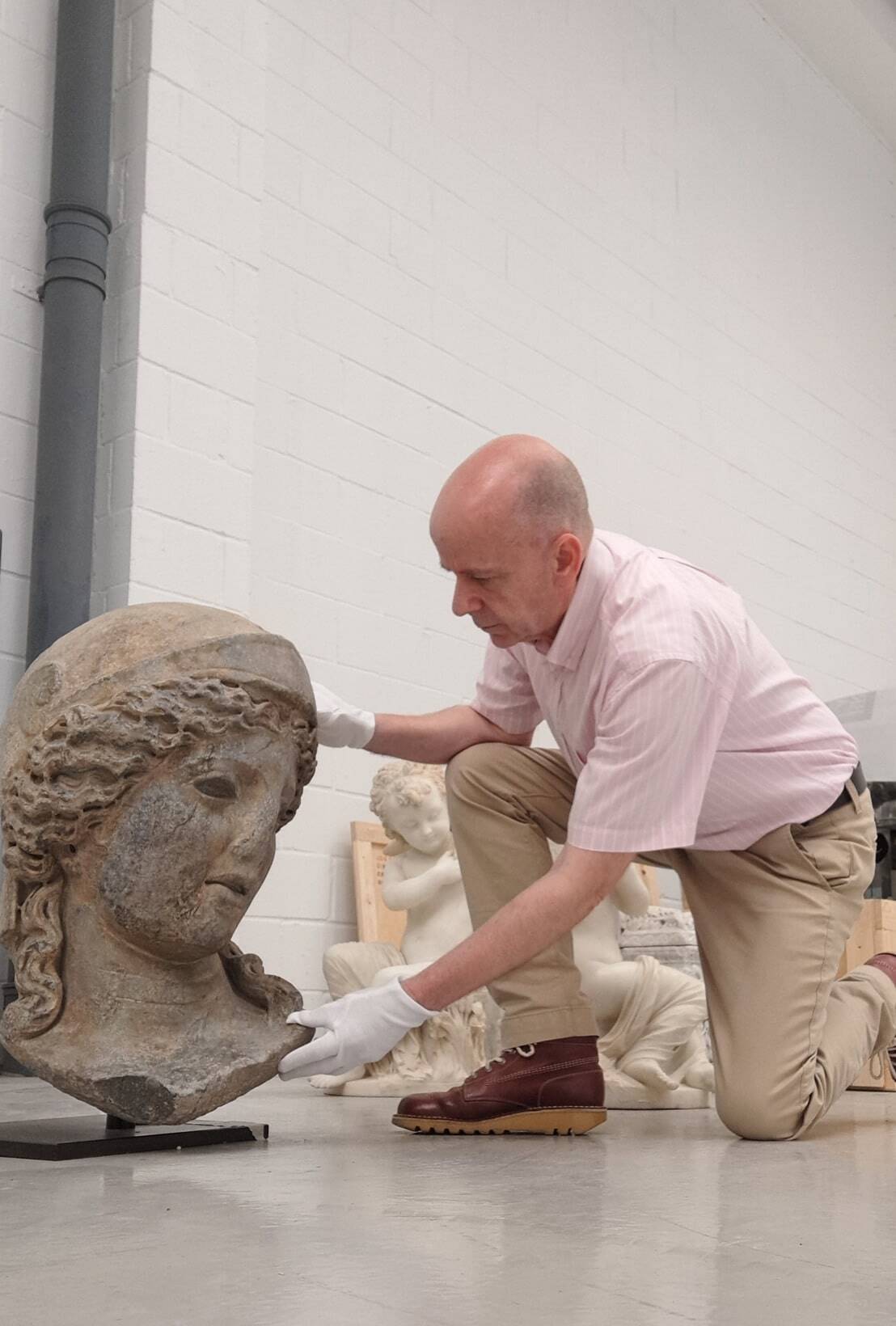
Exquisitely Displayed
For the steel mounts, we worked with object mount makers to design the most aesthetically pleasing solutions. We ensured that, where possible, these mounts could not be seen. We arranged for the artefacts that required mounts to be transported to the mount makers’ workshop by fine art handlers. By adopting this methodology, the mount makers made each mount fit the object securely and precisely.
Whilst all this work resumed, other objects would go into more vulnerable areas. These precious artefacts already had signs of cracking or being previously poorly mounted and needed special attention. We suggested to the client that these objects be x-rayed to investigate what was going on internally. For example, the two emperor busts are the most valuable pieces on display. These impressive artefacts are needed to withstand the vibrations caused by the restaurant’s heavy base sound system. They had pre-existing visual repairs across many surfaces; however, the client needed to decide whether to display or withdraw them.
The x-rays clearly showed the bust had several large pins holding it together. Movement was also between both bust bases (socles) and the main torso. Once this information was provided, the clients decided to display the emperor busts but retain our company to monitor them monthly. Other objects, after being x-rayed, were either relocated or replaced with a more stable artefact.
The next step was to conserve, repair, clean, and age artworks where necessary. Due to time constraints, these had to be done mainly onsite before installation. The client agreed upon the installation schedule, and the objects were installed over two weeks. A four-man team could lift some of the smaller objects. However, the larger marble objects required lifting into place using heavy museum lifting equipment and Teflon glides. Some of these ancient art artefacts weighed hundreds of kilograms.
Carefully, each object was positioned exactly with its orientation adjusted to fit the space and people flow. Subsequently, the lighting was modified to add highlights, shadows, and drama.
Everyone involved in this fast-track project pulled together seamlessly to make Bacchanalia an extraordinary and aesthetic experience. It is reportedly the most expensive restaurant in the world in its creation and fit-out. It is a vibrant restaurant and member’s lounge like no other! Here you can be immersed in wealthy history, engage with priceless artefacts, and mingle with celebrities, all while indulging in a delicious meal!

